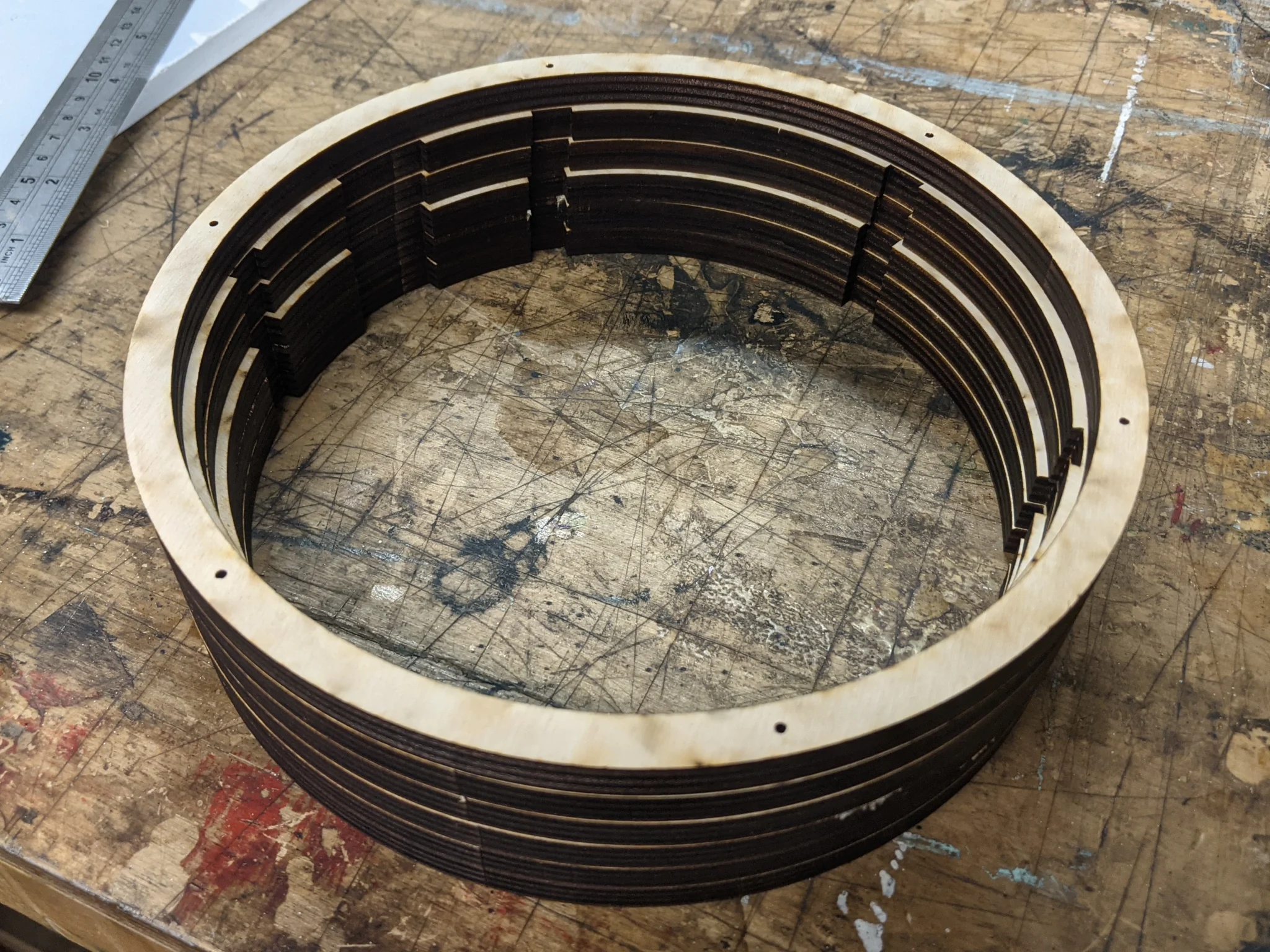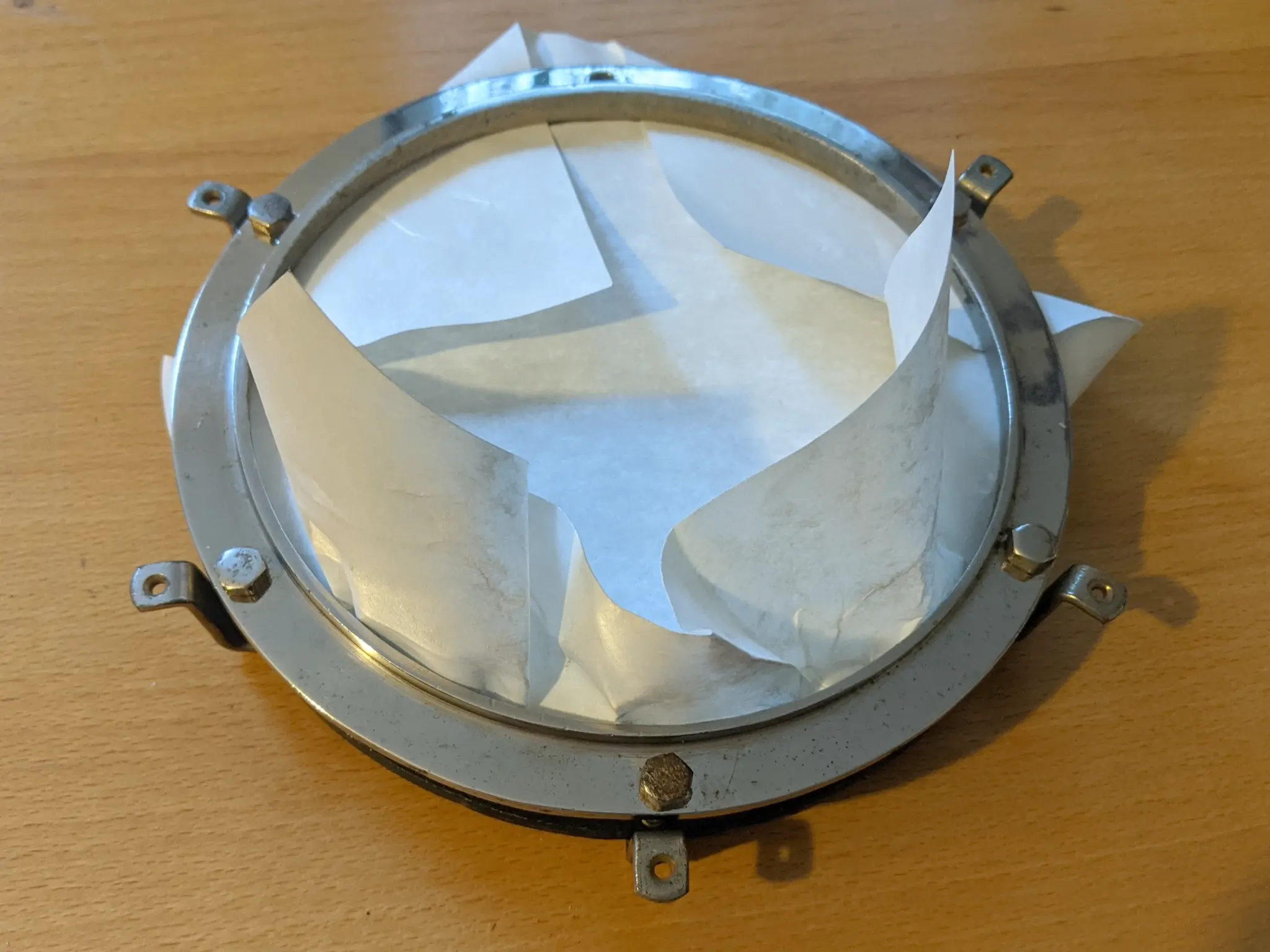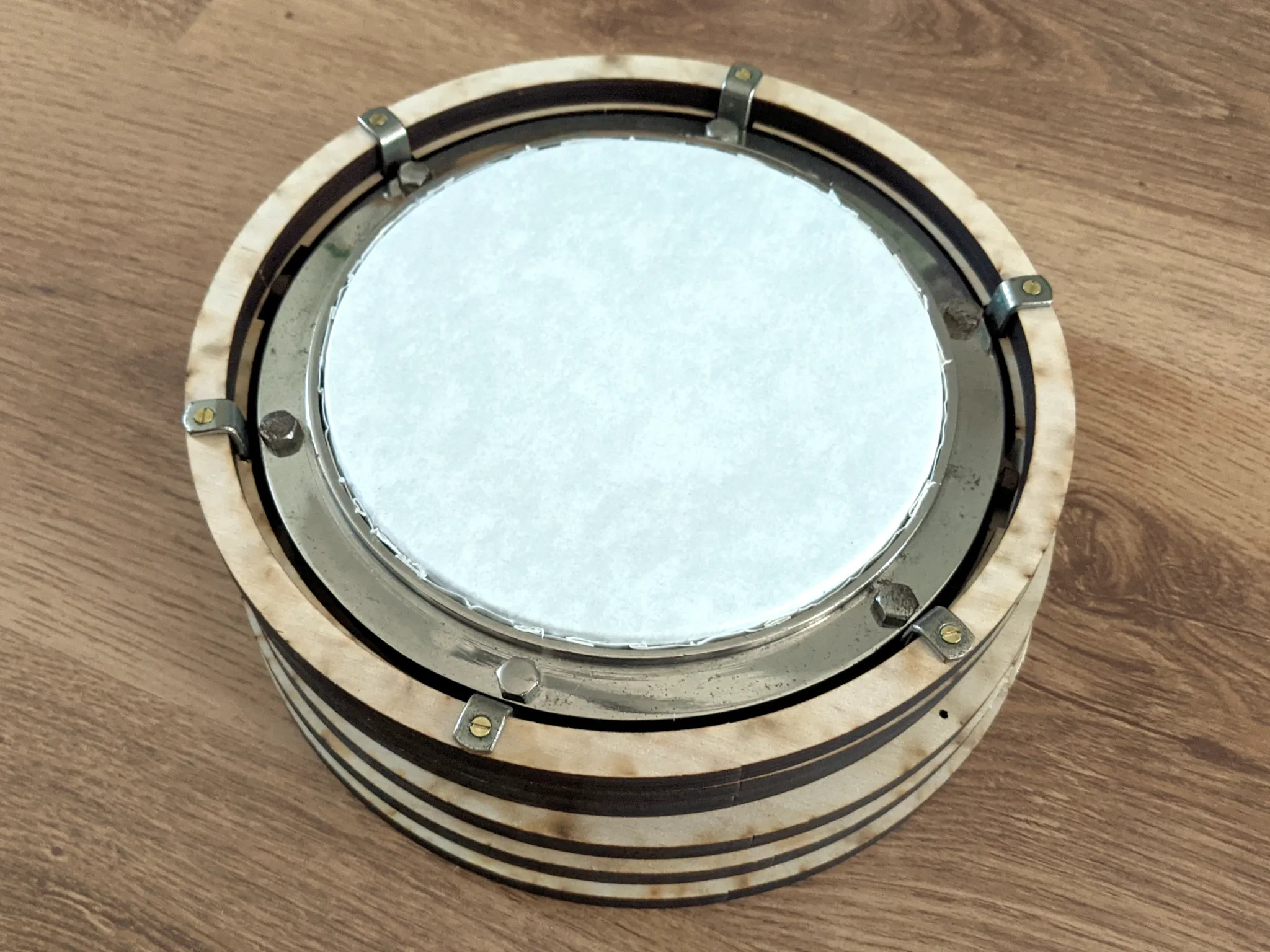Restoring an old mandolin-banjo, part 1
I recently bought an old mandolin-banjo (also called a banjolin, although that term is a bit contested) for very little money on eBay. As well as the usual maintenance of needing a new skin, it suffered from the same fate as all mechanism-in-pot instruments in that the tension is supported by a wooden ring that distorts under pressure over time, leaving the neck angle too shallow.

The instrument as I bought it
In fact, there are prophylactic measures that can be taken, and this instrument had them in the form of bolts that can be expanded outward so that the metal rim of the drum head also supports the pot. But someone didn’t do that, and now it’s too late.
My solution is to make a new pot. I’ll use the same base, but replace the rim with a stack of laser-cut plywood rings, glued together. The old pot was about 54 mm, so six layers of 9 mm ply are perfect. I’m taking advantage of the manufacturing process to make the ring thicker as it goes down, so that it’s at its thinnest only at the very top. I’ll paint the inside black and you won’t see the steps. I hope that the varying grain direction of the ply will make it more robust, too.

The laser-cut rings that will form the pot
You can’t easily buy a 5½ inch drum head, so I replaced the skin using a sheet of 0.18 mm (0.007 inch) Nomex, following instructions I found online. It was hard work, but I eventually accomplished it.

Reskinning in progress
The material looks surprisingly authentic, considering that I bought it as a 1.9 × 1 m roll from an industrial supplier. I think it’s usually used for insulating transistors. I wonder whether it might work for other intruments, like the shamisen.

Nomex skin fitted
The next job is to glue up the stack of rings. I’ve 3D printed some pieces to align them during this process. I’ll remove the base from the old pot – it’s already halfway there – and transfer it, apply some veneer to the circumference, and drill and finish the pot.
The neck also needs a bit of work to replace a couple of worn frets up by the nut. That shouldn’t be too difficult, especially as the fretboard is flat.
But for that, I need to wait for the mandolin fretwire I’ve ordered to arrive.